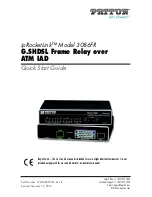
Item
Network 1
Network 2
Network 3
Network
16
32
48
First Host
17
33
49
Last Host
30
46
62
Broadcast Address
31
47
63
Subnetting using variable length subnet masks (VLSM) seems pretty easy, doesn’t it?
The type of access list defined is identified by the number you assign to the access list. Table 13.3 identifies
the types of access lists that can be configured, along with the associated string of numbers that can be used
with each type.
Table 13.3: The available access list numbers and the associated access list types.
Available Numbers
Access List Type
1 through 99
IP standard
100 through 199
IP extended
200 through 299
Protocol−Type−Code
300 through 399
DECnet
600 through 699
AppleTalk
700 through 799
48−bit Media Access Control (MAC) address
800 through 899
IPX standard
900 through 999
IPX extended
1000 through 1099
IPX Service Advertising Protocol (SAP)
1100 through 1199
Extended 48−bit MAC address
1200 through 1299
IPX summary address
Extended access lists use many of the same configuration rules as standard access lists. An extended access
list allows filtering based on source address, destination address, protocol type, application, or TCP port
number.
Note
Just as in standard access lists, an implied “deny all” exists at the end of each extended access
list.
The IP extended access list command is more complex than the standard access list command and offers many
more options. The IP extended access list syntax is shown here:
access−list access−list−number {deny|permit} {protocol type}
source−address source−wildcard destination−address destination−wildcard
[protocol specific options|operator] [log]
Tip You can use the syntax any as a parameter to replace the source or destination address; any implies all
addresses. In IPX access lists, A(n−1) indicates an any syntax.
Let’s take a look at the syntax elements for the IP extended access list that are not included in the standard
access list:
access−list−number—For an IP extended access list, the range of possible numbers is 100 to 199.
•
deny|permit—A permit indicates whether the source will be allowed in or out of an interface. A
deny indicates that the data will be dropped and an ICMP message will be sent to the source address.
•
protocol type—This syntax element indicates the protocol to match. Possible options include eigrp,
icmp, igrp, ip, nos, ospf, tcp, udp, or any number from 0 to 255.
•
Tip The protocol syntax of ip indicates all protocol types.
258
Summary of Contents for Catalyst 1900 Series
Page 1: ......
















































